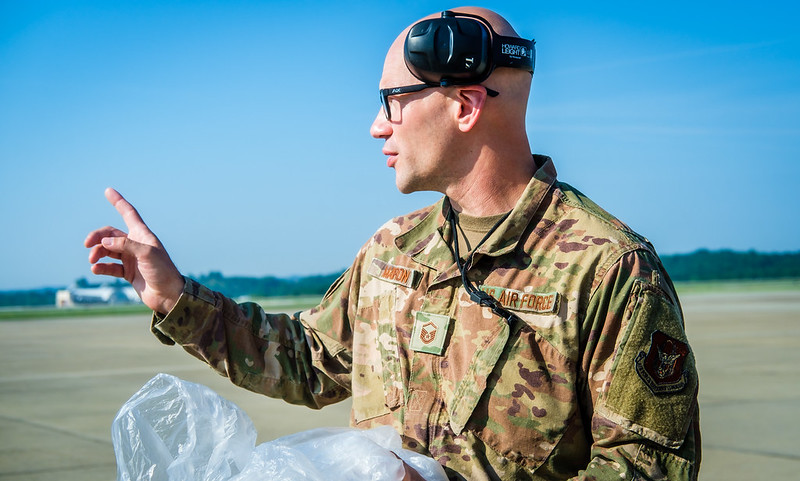Runway Debris Can Spell Trouble for Airplanes
From pebbles to plane parts, regular airfield strolls help keep airports safe
By Jeff Martinelli
Published August 10, 2020
Read Time: 3 mins
On Monday, more than 100 airmen from the U.S. Air Force Reserve’s 911th Airlift Wing spread out on the ramp at their Pittsburgh International Airport base, searching.
This was not an emergency or a military mobilization. Instead, the airmen were walking the airfield as part of a bimonthly exercise to keep the airport—or rather, their airplanes— safe.
Known as “FOD walks,” for “foreign objects and debris, dozens of airport employees regularly walk the airfield from one end to the other—or just a smaller section, in Monday’s case—to find items big or small that can cause major damage when sucked into an airplane’s engines.
Pebbles and gravel can cause issues. Nuts and bolts, pens and plastic items, even a misplaced airplane marshalling wand or two have been pulled from the field in past walks.

Airmen from the 911th Airlift Wing conduct a FOD walk on Monday, August 10. (Photo by Beth Hollerich)
“First and foremost, we conduct FOD walks to prevent any damage resulting from foreign objects on the flight line,” said Tech Sgt. Marjorie Schurr, chief of public affairs for the 911th. “C-17 Globemaster III engines are powerful enough to pull debris from the ground and fragile enough that any foreign object could cause damage in excess of millions of dollars.
“We have a responsibility to be meticulous in our efforts to prevent damage to such expensive equipment, and we take that responsibility very seriously.”

MSgt John Marron helps to lead a bimonthly FOD walk on the airfield surrounding the 911th Airlift Wing at PIT on July 10. (Photo by Beth Hollerich)
The entire airport community takes these walks seriously, with daily inspections on the runways and other events scheduled through year. According to Patrick Carreno, PIT’s Vice President of Airport Operations, FOD walks are not required by the FAA but are considered an industry best practice.
The 911th performs walks on its ramp bi-monthly , but PIT’s Ops team performs at least three runway inspections each day. Staff will drive the runway, stopping to clear away small chips of concrete and other debris.
“We do at least one per shift,” Carreno said. “However, if winter weather comes through, or a severe thunderstorm, or anything unusual occurring out in the field, we’ll do another inspection.”
Walking the talk
At a monthly meeting with the airlines, airport staff distribute a FOD report that lists items found, the time and date found, and their location.
“We review the FOD report with the airlines and if we see an increase of FOD in their area, we mention it,” Carreno said. “We inspect any paved surface of the airfield where an aircraft can move. It could be the runway or the gate.”

The 911th Airlift Wing stores the debris found during its regular FOD walks inside a clear container. (Photo by Beth Hollerich)
With about 8,800 acres of airport land and four runways, it would be easy to imagine how easy it would be for FOD to accumulate on the windswept airfield. One uncovered dumpster or a few lidless trash cans could blow up quite a bit of debris.
Carreno said the vigilance of the operations staff keeps the level of FOD at bay.
“Anytime we’re out on the airfield, it’s part of the job,” he said. “FOD walks and inspections help get more eyes on the airfield [and] engage the people working out there. It’s the responsibility of everyone working out there.”
Watch
This Next
Read
This Next





